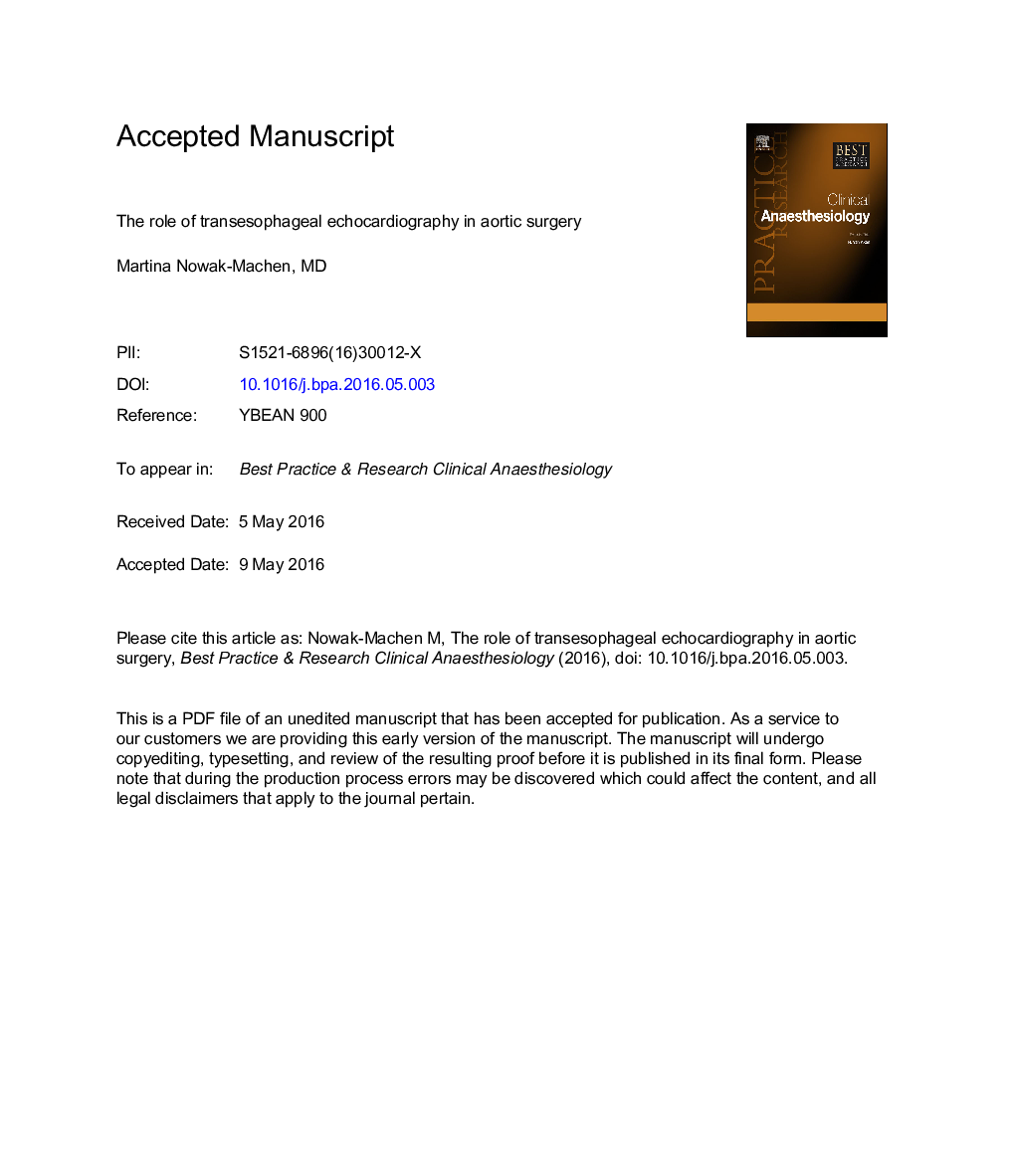| Article ID | Journal | Published Year | Pages | File Type |
|---|---|---|---|---|
| 5580627 | Best Practice & Research Clinical Anaesthesiology | 2016 | 33 Pages |
Abstract
Aortic disease, when left untreated, is still associated with major morbidity and mortality. Aortic dissection and aortic aneurysm are the main reasons for performing aortic surgery procedures in the adult. Imaging techniques such as computed tomography and magnetic resonance imaging play a key role in the preoperative evaluation. Transesophageal echocardiography (TEE) has become a safe and invaluable perioperative imaging tool for aortic disease over the past decade with high sensitivity and specificity. TEE can increase patient safety and improve overall patient outcome in aortic surgery. Especially during endovascular aortic repair, TEE is more sensitive than other imaging modalities in diagnosing complications such as graft endoleaks. Newer echocardiographic techniques such as three-dimensional (3D) TEE and contrast-enhanced TEE are emerging and seem to have a valuable role especially in aortic dissection repair and endovascular aortic stent procedures. In the absence of contraindications, TEE should generally be performed during aortic surgery and endovascular aortic procedures.
Related Topics
Health Sciences
Medicine and Dentistry
Anesthesiology and Pain Medicine
Authors
Martina (âAttending physician cardiothoracic anesthesia and pediatric cardiac anesthesia),
